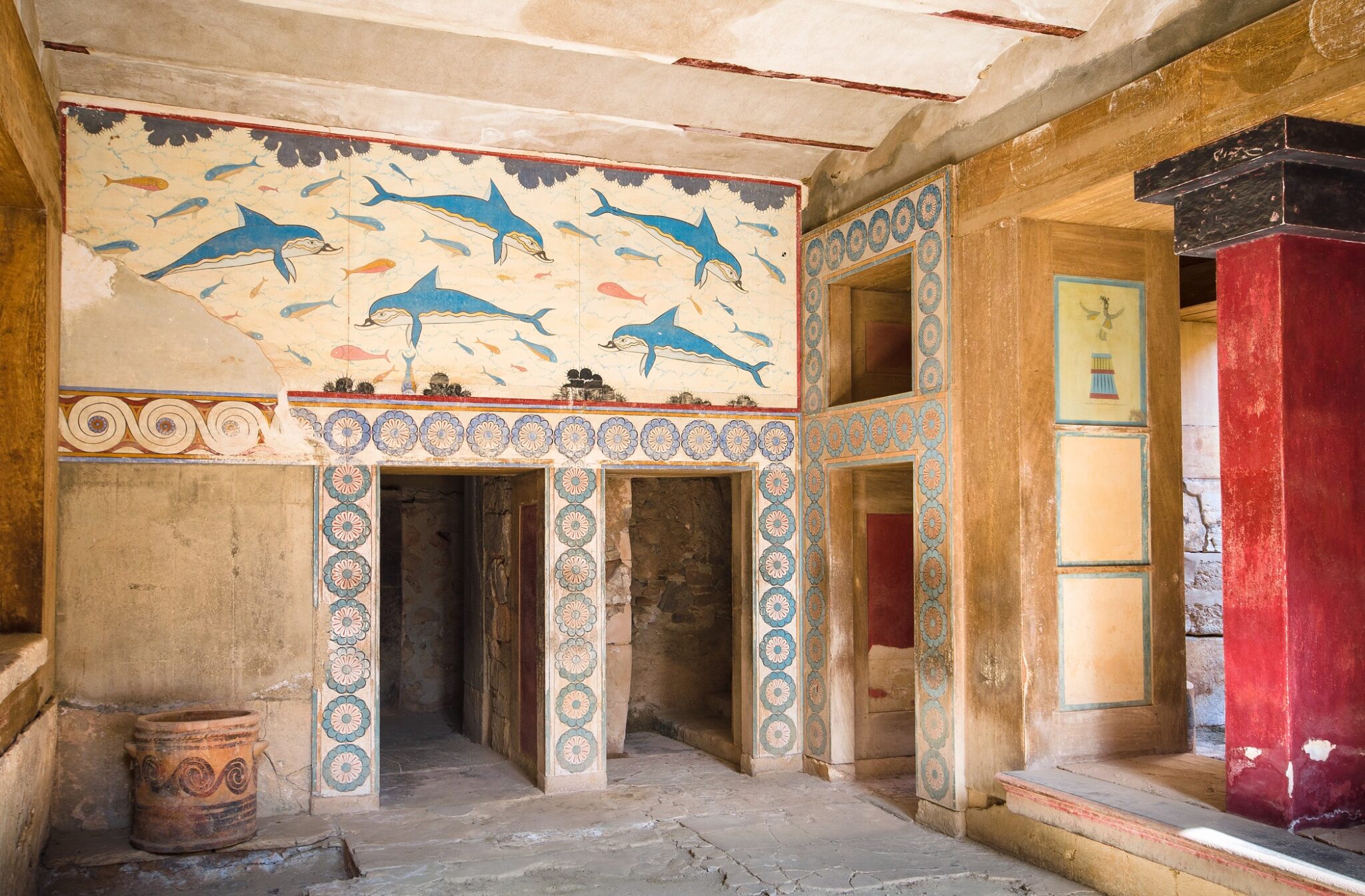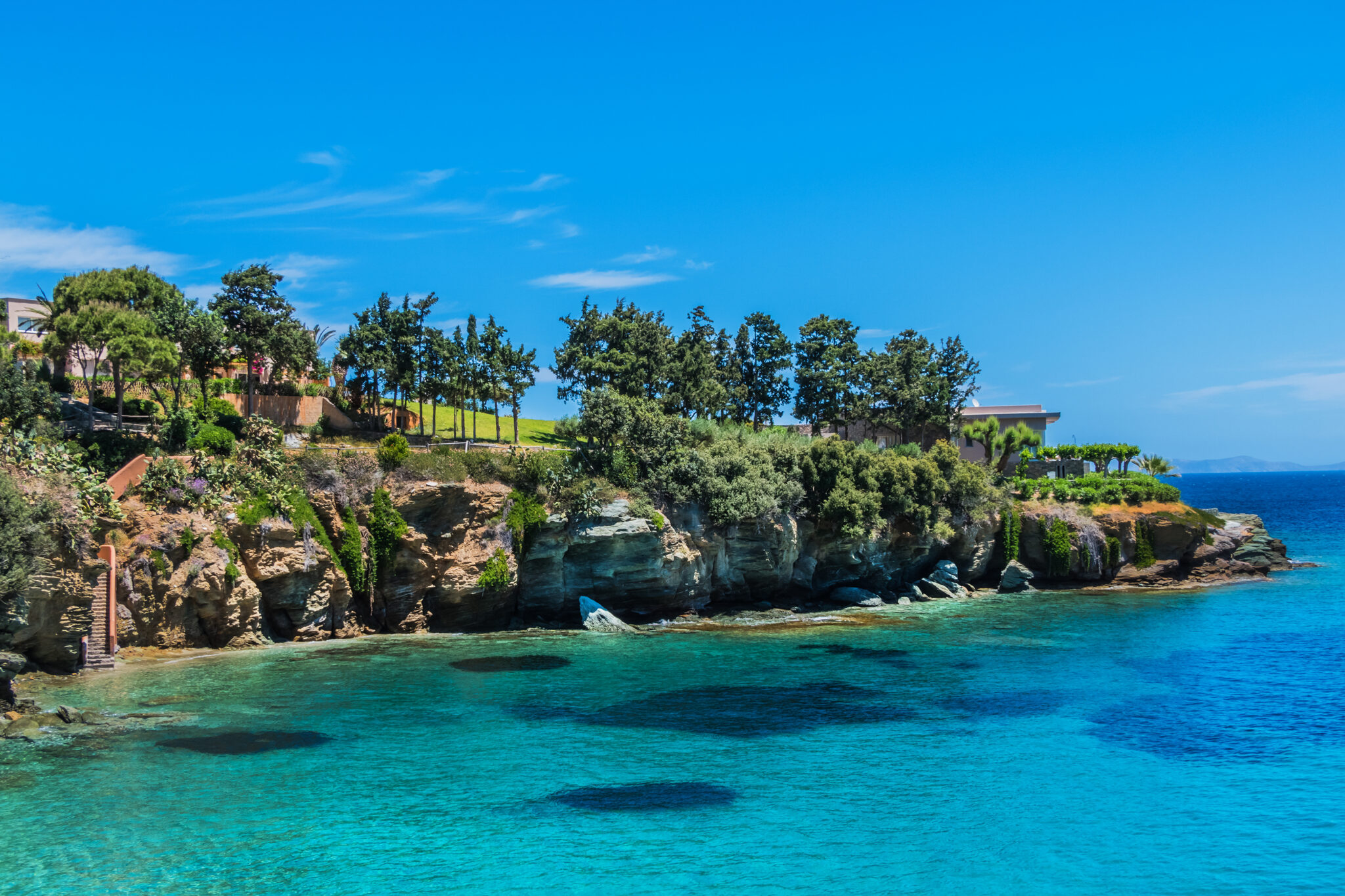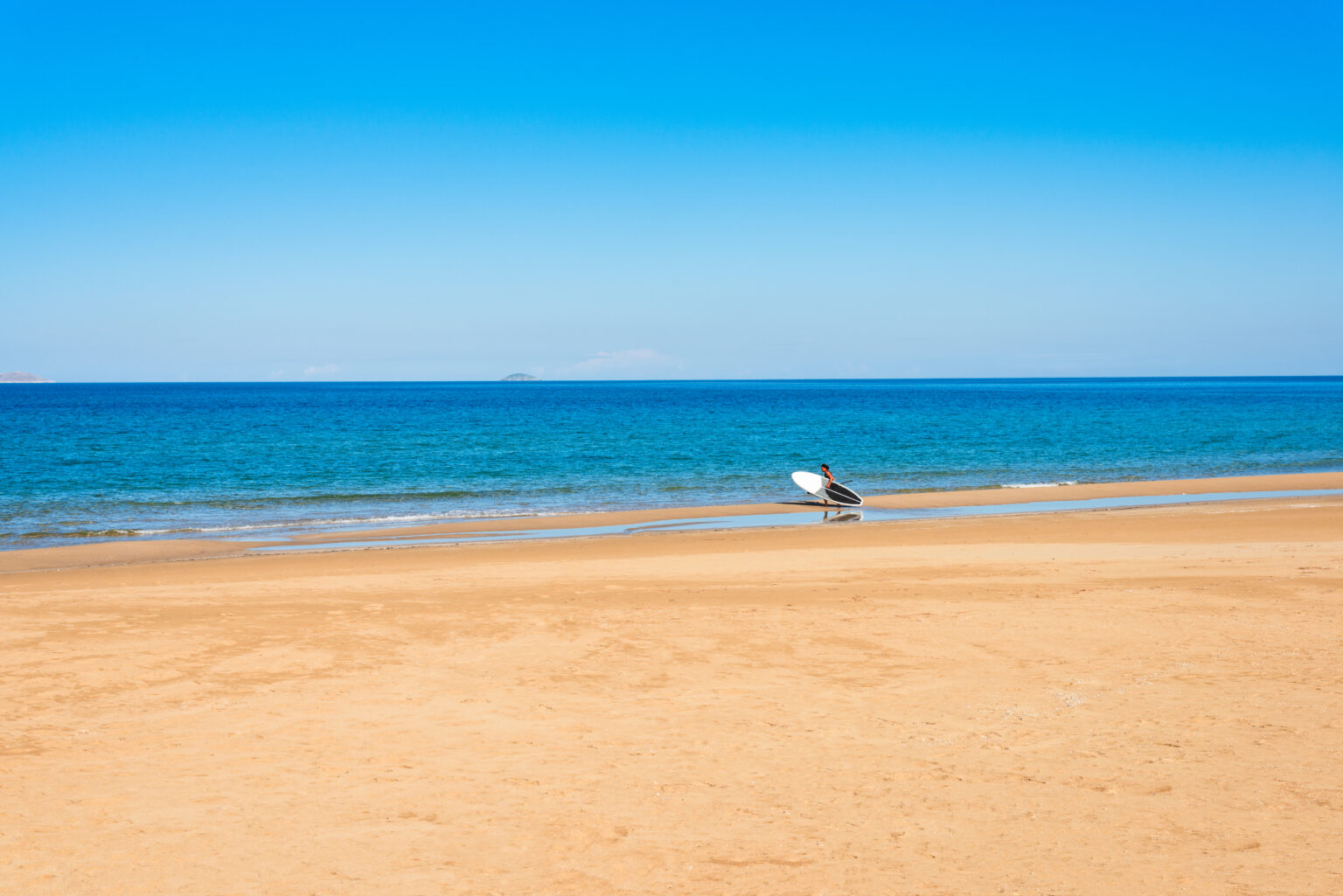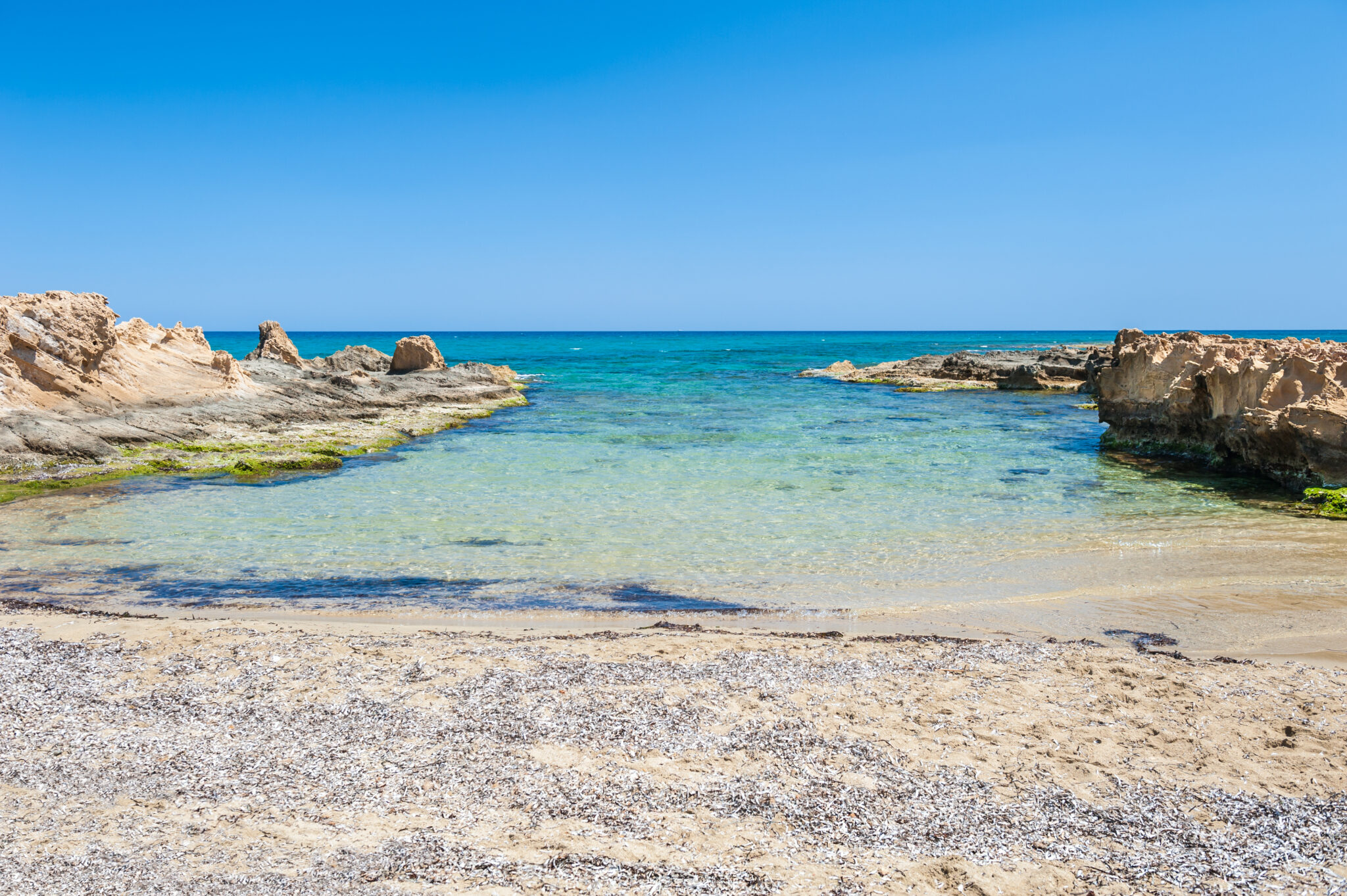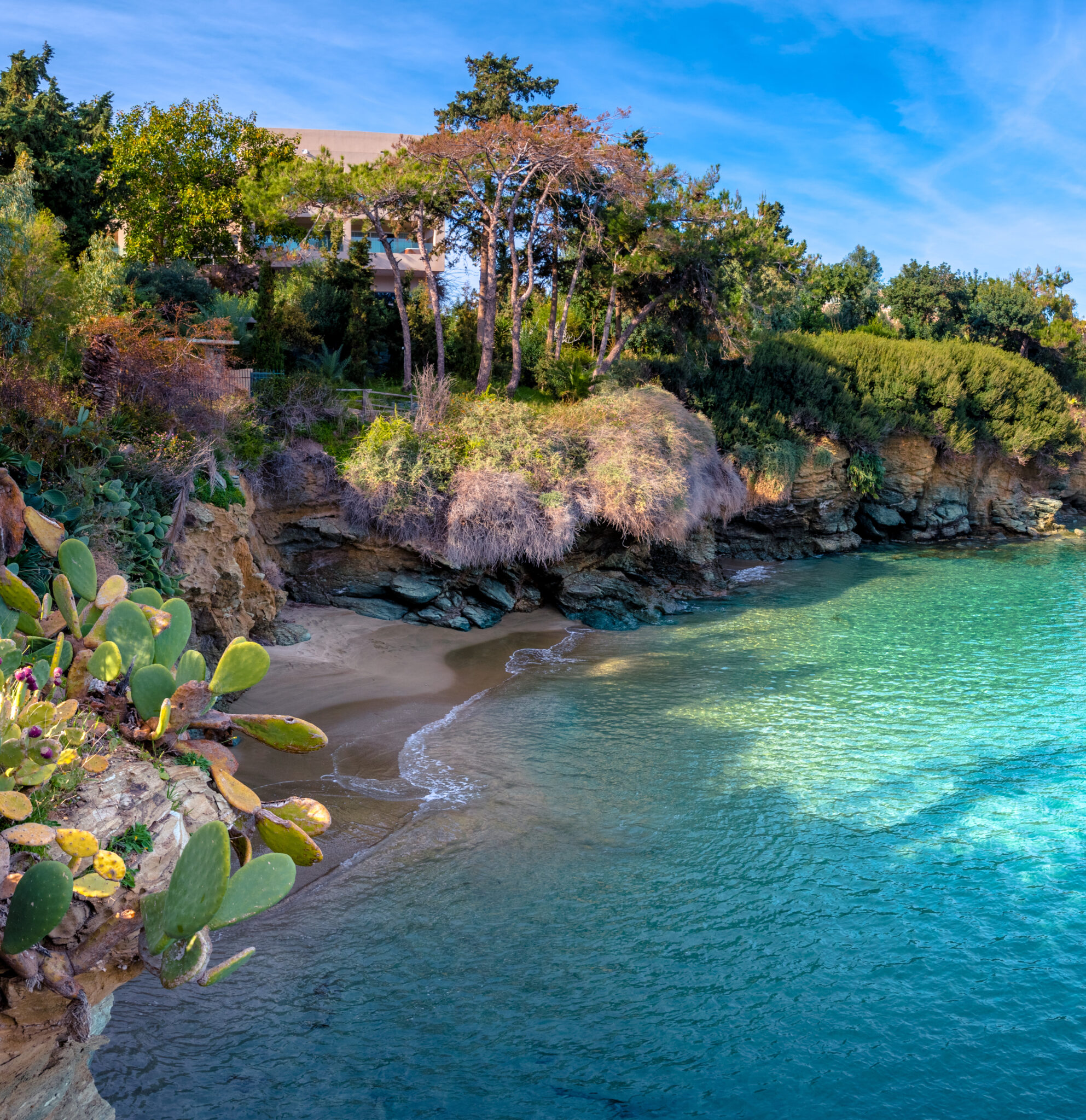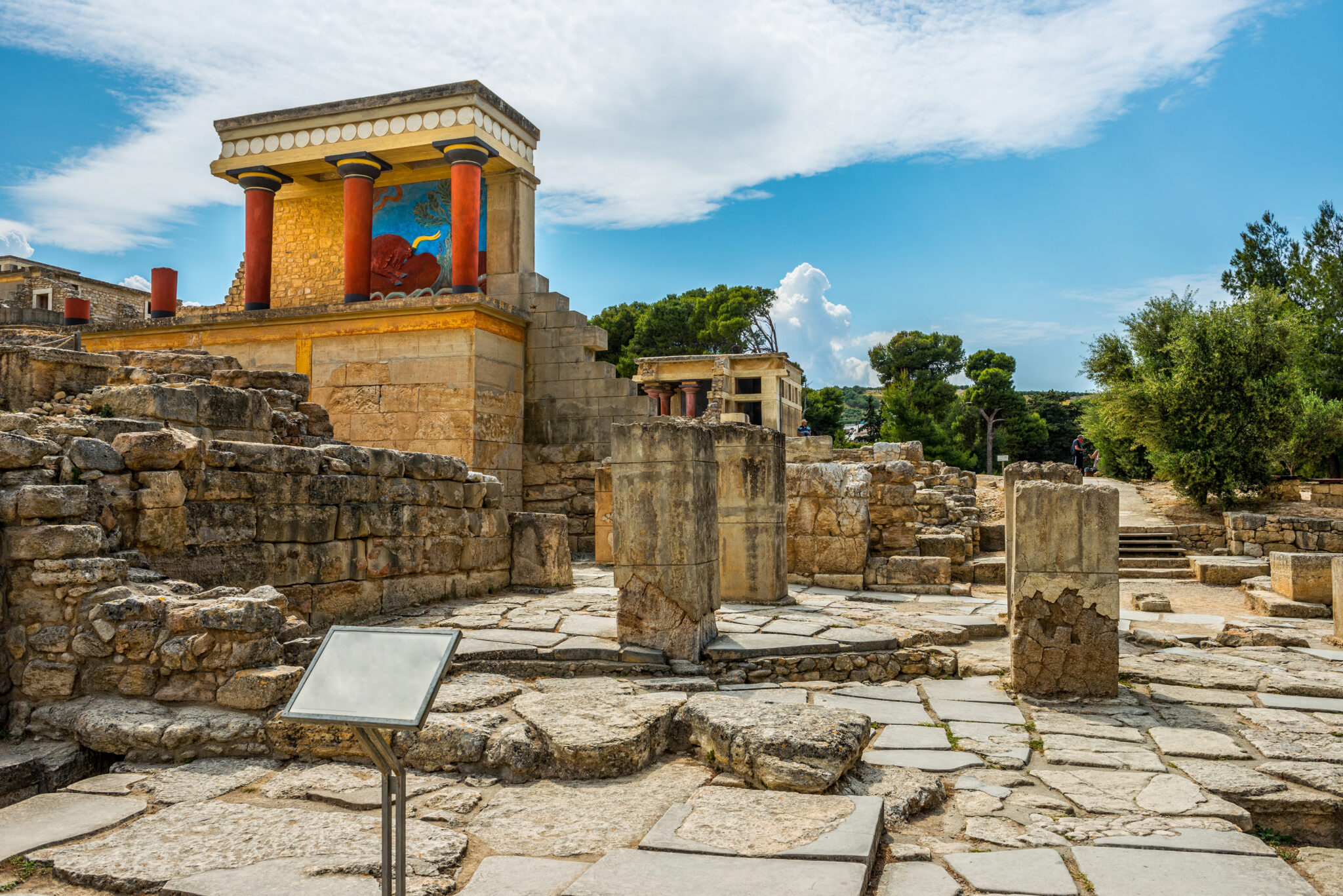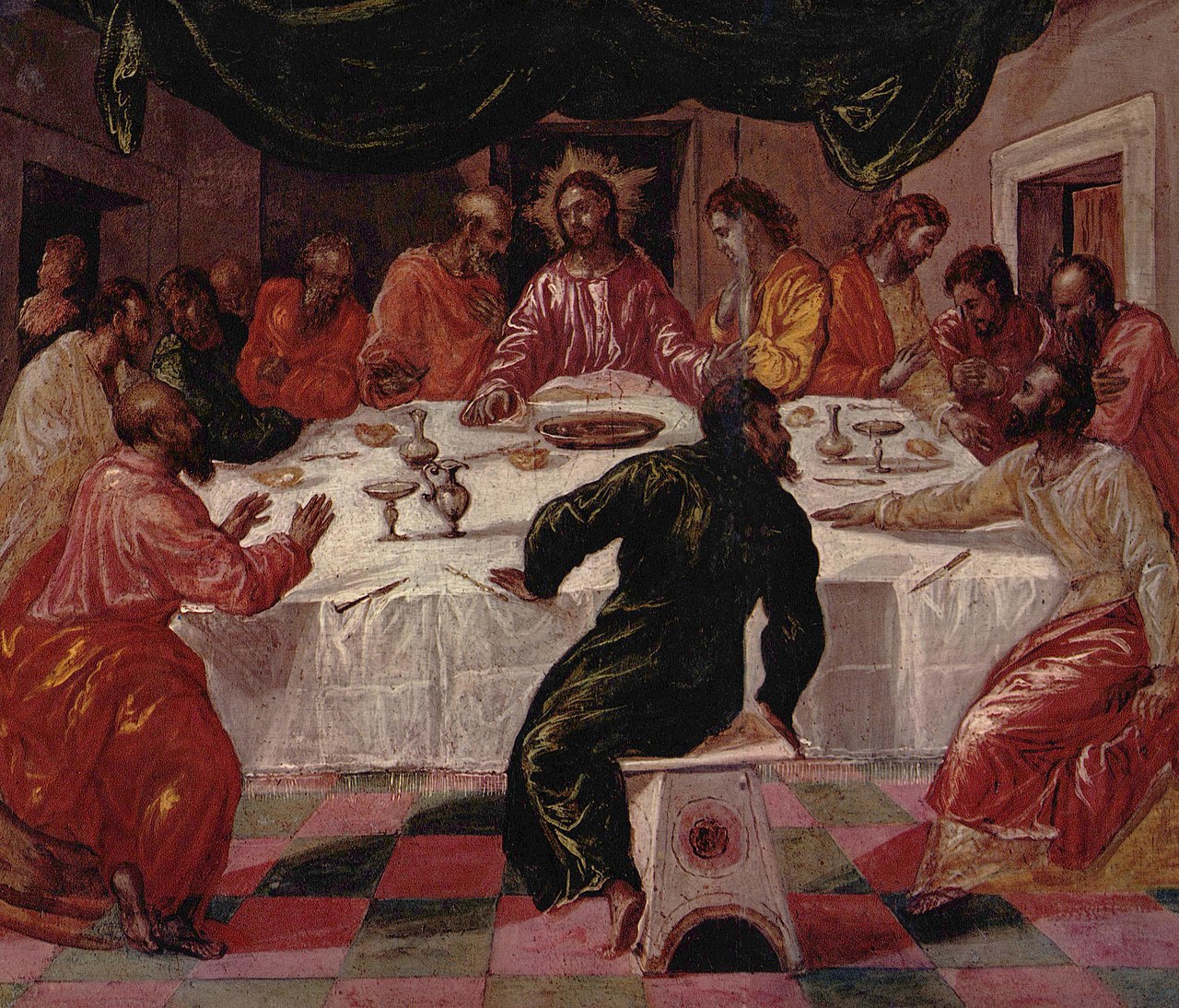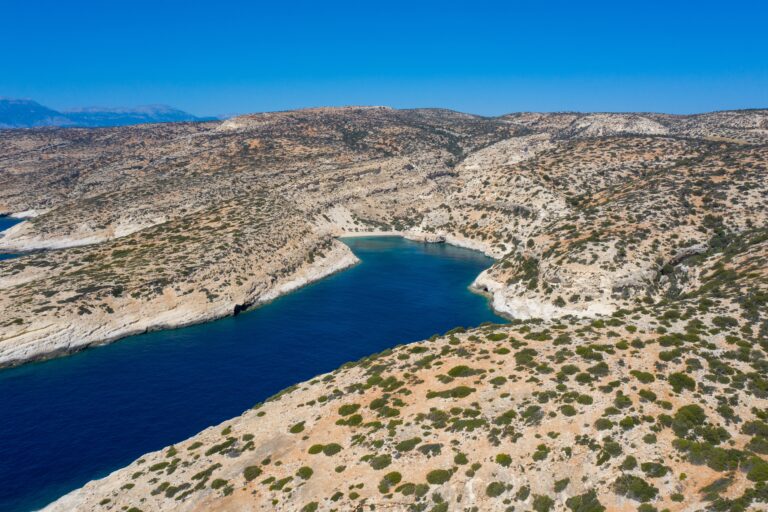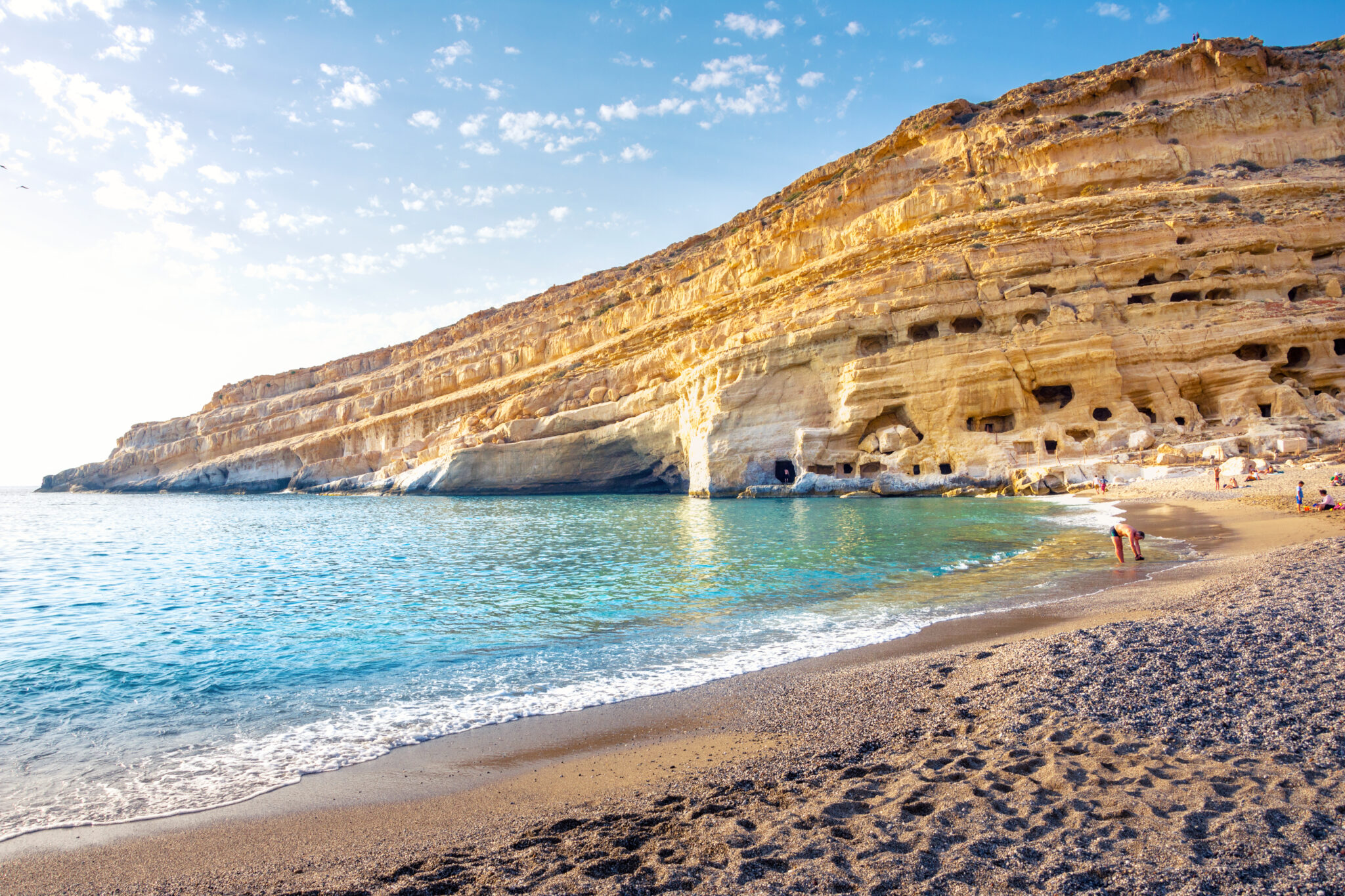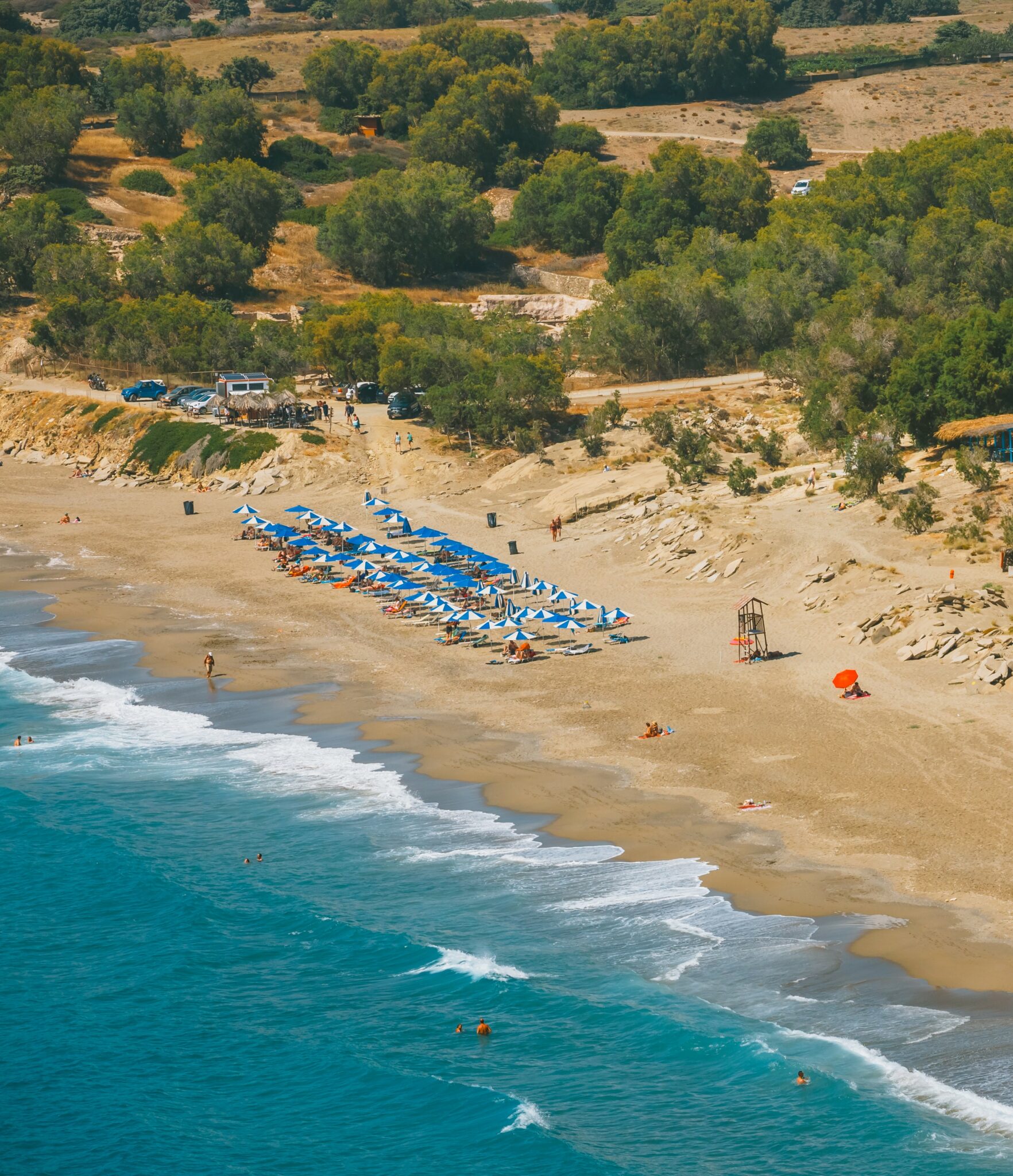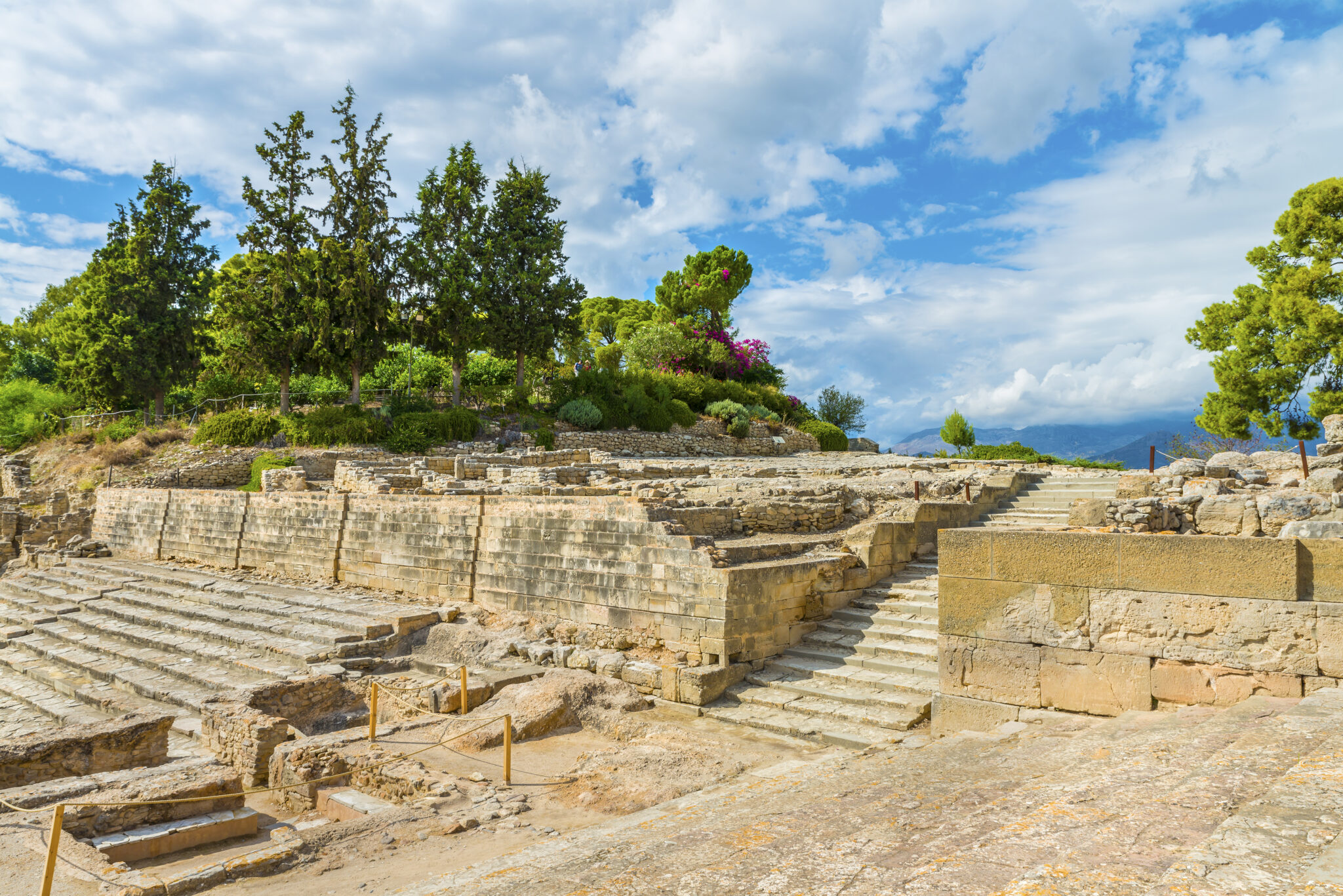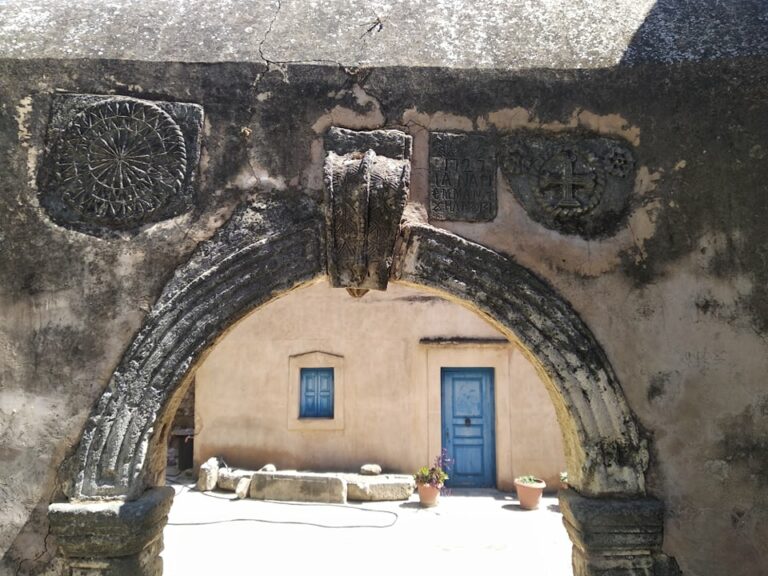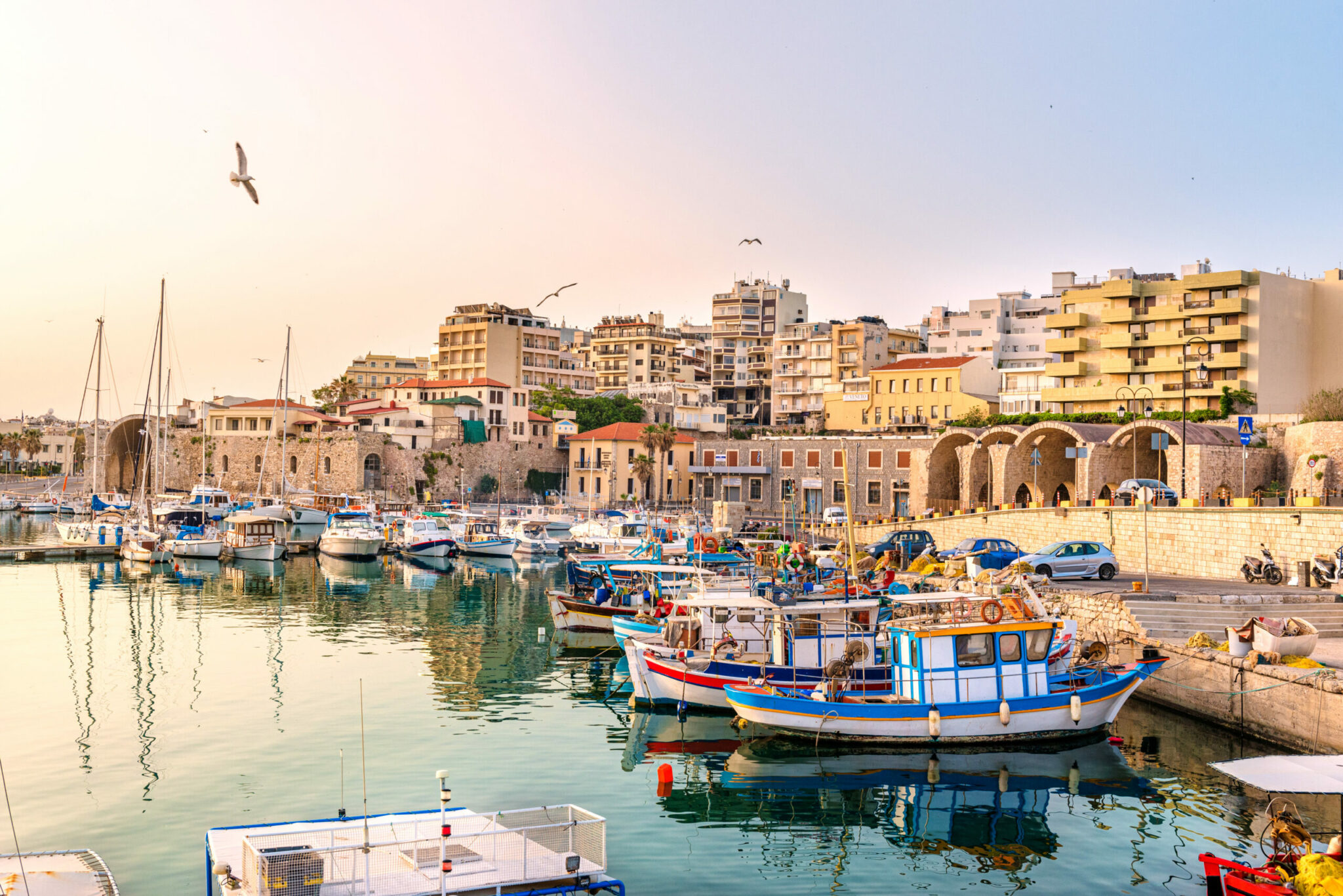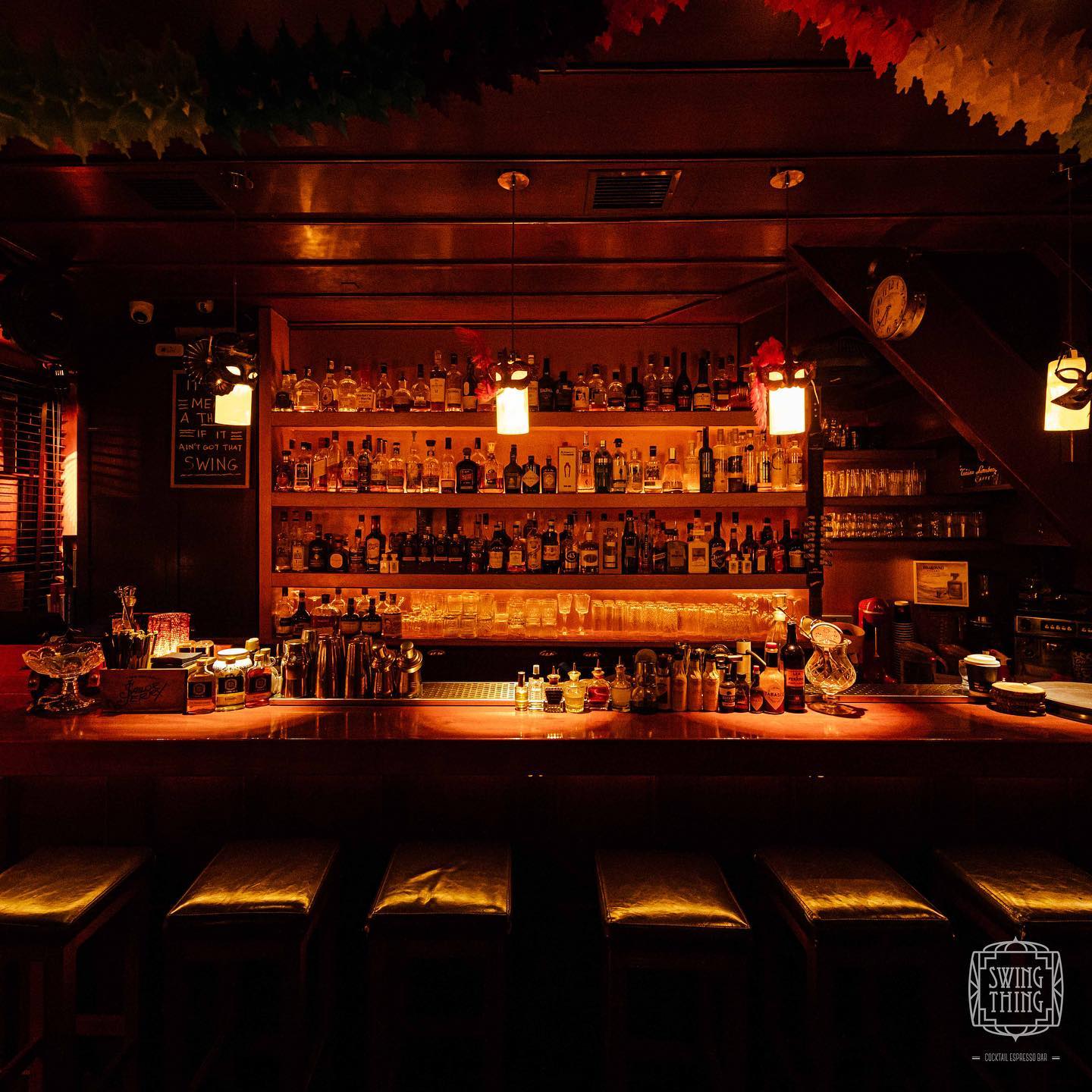Heraklion is home to some of the island’s most spectacular beaches, most of them with multi-varied natural surroundings and clean, crystalline waters. And then there are the magnificent sights to see very close to these shores, which means you can combine sightseeing and swimming for an extra-rewarding experience.
Many of the beaches are well-organized with sunbeds, umbrellas, and watersports facilities, while others remain unspoiled and secluded, some reachable only by foot or by boat. Since many of the beaches and sights we mention here are situated beyond the town’s limits, personal transportation is indispensable.
Northern Shore
(In close proximity to the city and must-see)
Ammoudara
This large sandy beach is fully organized and near numerous hotels, restaurants, and more.
Agia Pelagia
A popular beach 18 kilometers from the city, it is in an area filled with hotels, rental rooms, restaurants, shops, and more. There are also organized diving schools and plenty of opportunities for watersports.
Arina (Kokkini Hani)
Popular especially among youths, this organized beach is surrounded by hotels, shops, restaurants, and beach bars (that play loud music).
Karteros
An organized beach east of the city, favored by young locals from Heraklion and the surrounding areas.
Stalida – Malia
A four kilometer sandy beach connecting these two tourist resorts. It is organized in parts, with many visitors and watersports facilities. For a quieter experience, head towards the archaeological site of Malia (read below).
Tobruk
A sandy beach named after the cafe that once operated there. There are tavernas, hotels, cafes, and more.
Fodele
Open to north-northwest winds, this beach has sand, pebbles, and tamarisk trees. It is partially organized, with a large hotel dominating one side. There are shops, restaurants, and rental rooms available.
Hersonissos
A coastal zone that is a nightlife hotspot, with loud music and swimming at Limenas beach, which has umbrellas and coarse gray sand. The area is popular with young foreign tourists.
+ Top 5 Nearby Sights
Palace of Knossos
Built on Kefala Hill, this was Crete’s ancient center from the Neolithic Era until the 5th Century AD. Thrilling myths like those of Theseus and the Minotaur, and Daedalus and Icarus are connected to it.
Herakleion Archaeological Museum
One of Greece’s most important museums, showcasing 5,500 years of Cretan history. Highlights include Minoan masterpieces like the Snake Goddesses, the Bull-Leaping frescoes, and the Phaistos Disc. Exhibits from Knossos, Phaistos, and other sites illustrate Minoan culture’s grandeur.
El Greco Museum
Located in Fodele, 34 kilometers from Heraklion, opened in 1998 in a restored stone house, it’s thought to be El Greco’s parental home. The museum displays replicas of his works, information on his family, and rare photographs. In the courtyard is a cafe and El Greco’s bust.
Natural History Museum
The impressive museum explores Earth’s evolution beyond human history. Its five floors include exhibits on Mediterranean Sea’s biodiversity, maquis shrubland and northern Mediterranean forests, showcasing both digital and physical displays of regional ecosystems.
CretAquarium
Located in Gouves, near Heraklion and Kokkini Hani beach, CretAquarium is the Mediterranean’s largest aquarium. It features 61 tanks with over 2,000 marine creatures from 200 species, showcasing Mediterranean and tropical marine life through interactive exhibits and modern audio-visual presentations.
Read more about Herakleion’s cultural and religious sights.
Southern Shore
(Very far from the city, but unmissable).
Agiofarago
While lying on the beach, you can gaze up to the high cliffs of a gorge forming a protective circle above you. With fine pebbles, sand, and beautifully clear waters, this beach offers a break from daily stress. Visit early in the summer or in the fall to avoid the crowds and the numerous anchored boats during peak season.
Vathi
With startling, turquoise waters, a deep sandy bay and uniquely shaped rocks, this beach is accessible via a nine kilometer dirt road that starts near the Odigitrias Monastery, or by boat from Agia Galini, Kokkinos Pyrgos, or Matala.
Kommos
A large sandy beach with cedar trees and sand dunes, where Caretta Caretta sea turtles lay their eggs. In summer, the beach gets crowded, and umbrellas and sunbeds are set up. There are taverns above the southern part of the beach where you can enjoy the sunset.
Matala and Red Beach
Matala is a small, charming sandy beach in front of the caves (see below). The summer throngs can be overwhelming, so for a quieter experience head to the adjacent (and impressive) Red Beach (Ammoudi).
+ Top 5 Nearby Sights
Caves of Matala
Matala, 70 km south of Heraklion, was an ancient port for Phaistos and Gortyn. Its famous caves, carved by hand in the Neolithic Age, were used as homes and later became a 1960s hippie haven. Today, the caves are protected and open to visitors.
Portela Gorge
This 4.6 kilometyer-long gorge runs from Chondros to Keratokampos in southeastern Crete. Popular with experienced canyoneers, it features narrow passages, rivers, waterfalls, and ponds. The route is challenging but rewarding, with a parallel hiking path available. The Richtra Waterfall, over ten meters tall, is a highlight.
Phaistos Minoan Palace
The Palace of Phaistos, on Kastri Hill, was built around 1900 BC. It controlled the Messara Plain and nearby ports. The palace, rebuilt after earthquakes, shows three construction phases. Flourishing again in later centuries, it was ultimately destroyed by Gortyn in 160 BC. Today, the site near Agios Ioannis showcases this history.
Kamilari Tholos Tomb
Surrounded by olive groves, the Kamilari Tholos Tomb, discovered by Doro Levi in 1959, exemplifies Minoan burial practices. This circular tomb, dating to 2000 BCE, features stone walls and multiple rooms. It housed around 400 burials and yielded artifacts like the “Kamilari Dancers,” now in the Heraklion Archaeological Museum.
Museum of Cretan Ethnology
The Museum of Cretan Ethnology showcases Crete’s diverse cultural history, influenced by Minoans, Romans, Egyptians, Arabs, Venetians, Ottomans, and Greeks. It features seven sections: food, architecture, weaving, handicrafts, transport, customs, and social organization. With 3,000 artifacts, it highlights unique Cretan traditions, including rare basket weaving techniques and traditional household items.
Read more about Heraklion’s cultural and religious sights
↓



